Relocating Your Cat: Ideas to Make House Relocations With Cats Easy
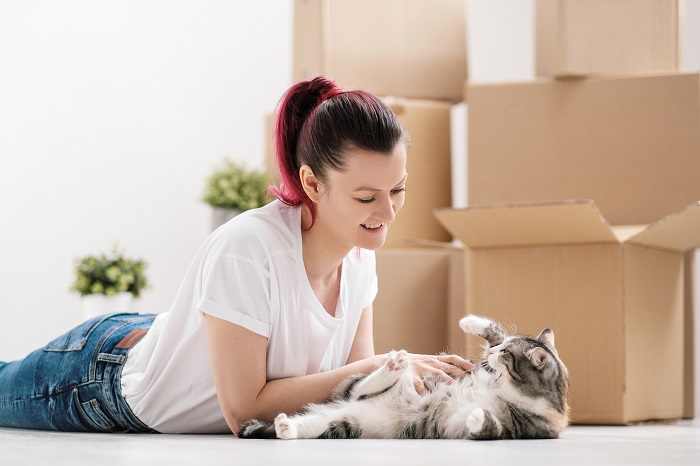
Relocating pets can be a stressful event for anyone, but it can be particularly challenging when you have a feline companion. Cats are creatures of habit, and changes in their environment can be unsettling. Proper planning and preparation can help ensure a smooth transition for your cat when moving to a new home.
Here's a comprehensive guide to relocating with your cat, covering everything from pre-move preparations to settling into your new home.
Before The Move
1 - Visit The Vet
Before moving, take your cat to the veterinarian for a check-up. Ensure that vaccinations are up-to-date and obtain any necessary health certificates if you are moving internationally. The vaccinations will protect your cat from unvaccinated animals in the neighborhood you are moving to. Discuss any concerns you might have about the move, and consider asking for recommendations on anxiety-reducing options, such as calming treats or pheromone sprays.
2 - Update Their Identification
Ensure your cat's identification is up-to-date. This includes updating their microchip information and making sure they have a collar with an ID tag that includes your new address and contact information. Make sure you have a recent photo of your cat. This will ensure you can post online if you need to later. Having your cat properly identified is crucial in case they escape during the move.
3 - Get Your Cat Used To The Carrier
If your cat isn’t already comfortable with their carrier, now is the time to acclimatise them.
Leave the carrier out in a familiar space on the floor with the door open, a few weeks before the move. Place their favorite blanket or toy inside. Use treats and positive reinforcement to encourage them to explore and spend time in the carrier. Gradually, start closing the door for short periods to get them accustomed to being inside. This will get them used to the carrier not being a negative experience such as being associated with the vet. Allow time to get them vaccinated and checked well ahead of this process.
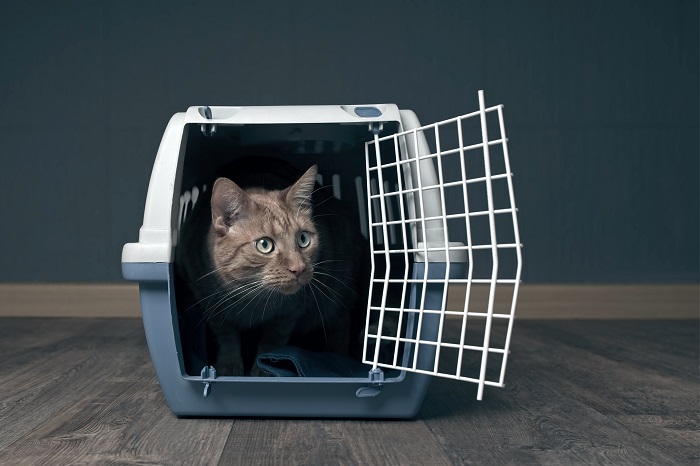
Some cats have very bad reactions to seeing the carrier, especially if they are used to being in it when unwell. This strategy should work, but be prepared to look at other options if your cat does not seem to be adapting.
4 - Create A Moving Day Safe Space
Set up a quiet, secure room in your current home where your cat can stay on moving day. This room should have their carrier, litter box, food, water, and some of their favorite toys. Keeping your cat in a separate room will prevent them from becoming stressed or escaping during the chaos of moving.
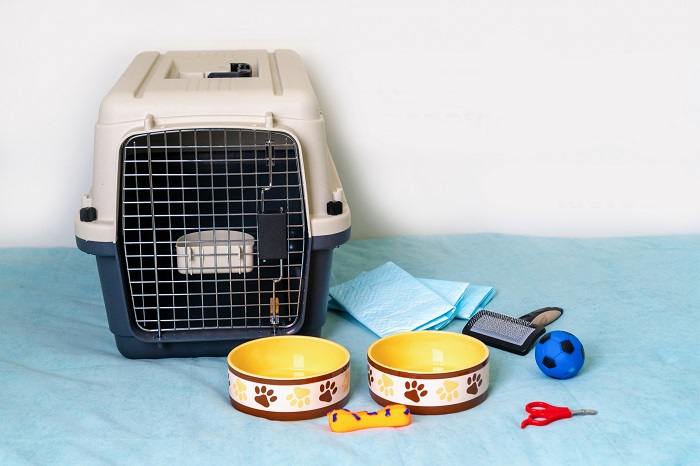
Yes its true, cats love moving boxes.
Be sure to put a moving box or two in the room. Your cat will be more comfortable chilling out in a box and avoiding the household chaos on moving day. The availability of a hiding place is a valuable coping mechanism and will help them stay calm.
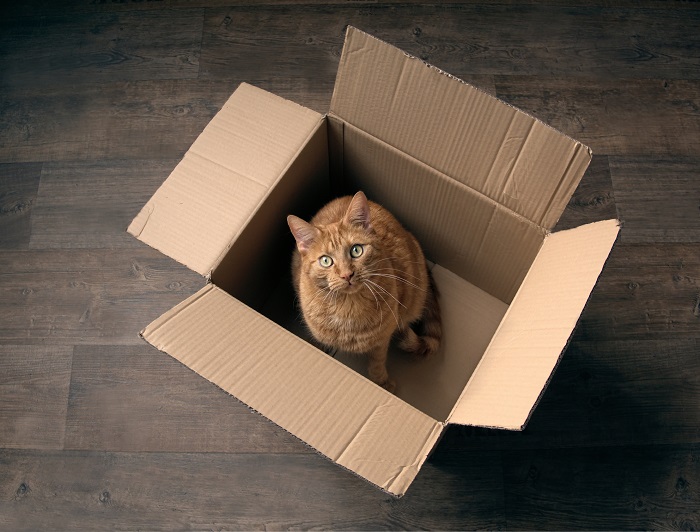
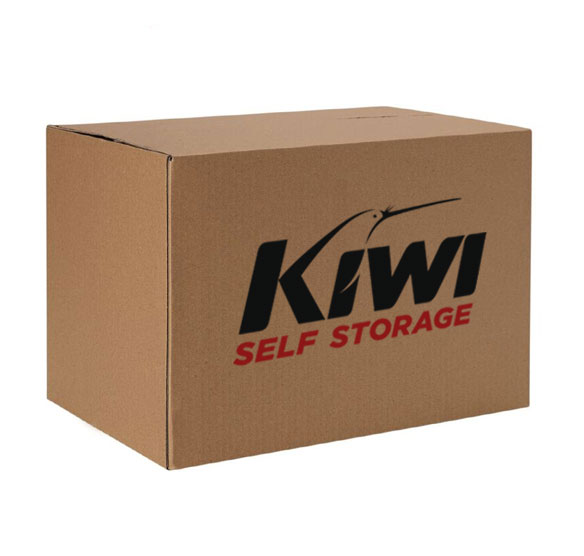
Small Box
455mm x 305mm x 305mm
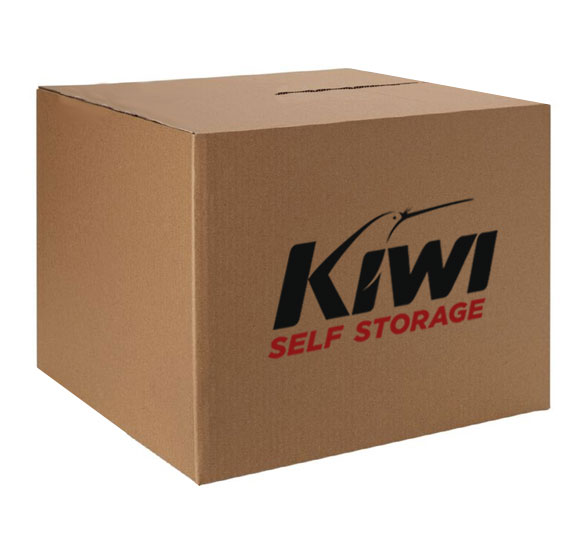
Medium Box
455mm x 455mm x 350mm
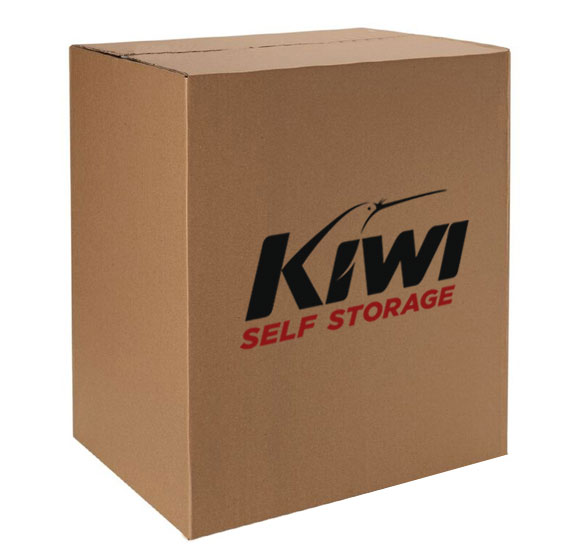
Large Box
520mm x 380mm x 585mm
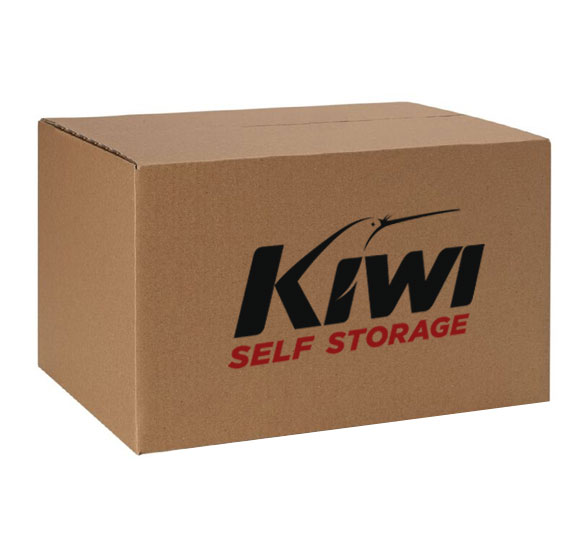
Crystal Box
420mm x 320mm x 350mm
5 - Maintain Routine
Cats thrive on routine, so try to keep their feeding and playtime schedules as consistent as possible in the lead-up to the move. There may be lots of new people around the house before and during the move. This familiarity can help reduce stress and anxiety.
6 - Pack Gradually
Cats can become anxious when they see changes in their environment, such as packing. They may associate the packing with occasions you have gone away without them. To minimize stress, start packing well in advance and do it gradually. Allow your cat to explore the boxes and new items to help them adjust to the changes. If a cat has a favourite piece of furniture try and leave that until last.
Moving Day
1 - Secure Your Cat
On moving day, keep your cat in their designated safe room until all the moving activities are complete. This reduces the risk of them escaping and ensures they stay calm. If you have pheromone spray or other items from your vet use them before the move starts.
2 - Finding Your Cat
Part of securing the cat is being able to find it if it does escape before the move or after it arrives at your destination. GPS tracking collars with smart phone apps enable you to keep track of your cat and give you peace of mind after the move when they do start to explore on their own.
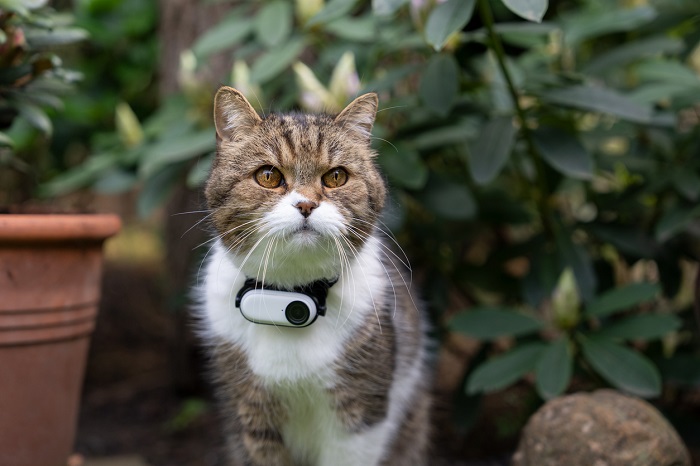
3 - Transport Safely
When it’s time to transport your cat to the new home, secure them in their carrier. Make sure the carrier is properly fastened and placed in a stable position in your vehicle. If possible secure it with a seatbelt. If the journey is long, plan for breaks to offer water and a chance to use a portable litter box. Be aware that any medications the vet may have given you may wear off. But be careful not to over do it!
4 - Keep the Environment Calm
During the move, try to maintain a calm environment. Keep noise levels down and avoid abrupt movements. Talk to your cat in a soothing voice to reassure them. Some cats will settle down after a while as they adapt to the journey. Others may not. You should be able to sense how well you cat is coping from previous experience on holidays or trips to the vet. You may need to have a couple of breaks en-route for the wellbeing of your self as well as your cat(s). If you are driving a long distance, consider overnight stopovers, find cat-friendly hotels or high-quality catteries. If you are flying, make arrangements with the airline when booking your tickets. There is a link in the additional reading section below if you are relocating overseas.
Arriving at the New Home
1 - Set Up a Safe Room
Upon arriving at your new home, set up a safe room similar to the one in your old home. This room should include their carrier, litter box, food, water, and familiar items like toys and blankets. This confined space allows your cat to acclimate to the new environment gradually.
2 - Gradual Exploration
Allow your cat to explore the new home at their own pace. Start by opening the door to the safe room and letting them venture out when they feel comfortable. Gradual exploration helps prevent overwhelming your cat with too much newness at once.
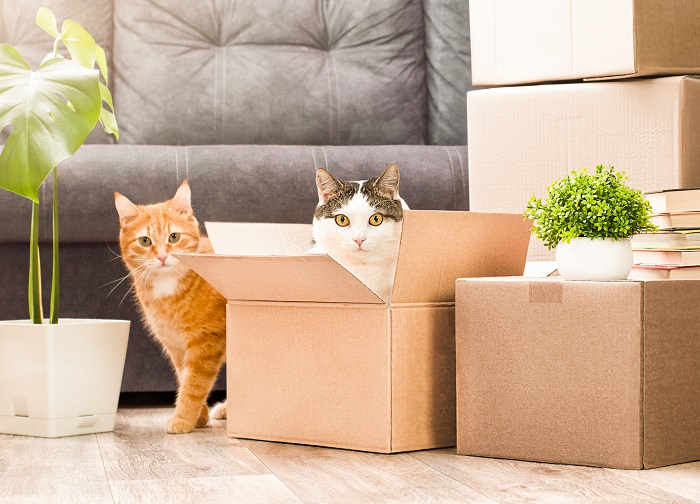
Once a cat feels comfortable in your new home they associate it with safety, territory and food. This may take 2-3 days depending on your previous experience with your cat.
3 - Maintain Routine
Continue to maintain your cat’s routine as closely as possible. Regular feeding, playtime, and cuddle sessions provide a sense of normalcy and security.
4 - Provide Comfort
Make sure your cat has access to their favorite items, such as beds, blankets, and toys. Familiar scents and objects can be very comforting and help reduce anxiety. Many on your cats memories of their old home will be via scent, so as soon as possible after you’ve settled in, plan a scented bubble bath with cat-specific products designed to cleanse, detangle, and soothe your feline’s coat. Doing this will wash away old scents and help them forget the smells associated with the previous home. Do this with their familiar objects over time too.
5 - Monitor Behavior
Pay close attention to your cat’s behavior in the days and weeks following the move. Some signs of stress include hiding, decreased appetite, excessive grooming, or changes in litter box habits. If you notice any concerning behavior, consult your veterinarian for advice.
6 - Use Calming Aids
Consider using calming aids to help your cat adjust to the new environment. Feliway, a synthetic feline facial pheromone, can be sprayed or diffused in your home to create a sense of familiarity and security for your cat. Additionally, there are calming collars and treats that can help reduce anxiety. Bribery with catnip may get you back in your cat’s good books.
7 - Introduce New Surroundings Slowly
When your cat seems comfortable, gradually introduce them to other parts of the house. Supervise these explorations to ensure they don’t get into any trouble or find hiding spots that are hard to access. If hiding they can fit in very small gaps under furniture. Also check for loose linings on the underside of bed bases.
8 - Secure Windows and Doors
Ensure that all windows and doors are securely closed to prevent your cat from escaping until they are used to their new home. Check for any small openings or gaps that your cat could squeeze through.
9 - Monitor Outdoor Access
If your cat is used to going outdoors, wait until they are fully acclimated to the new home before allowing outdoor access. This may be up to two weeks, depending on your cat.Initially, accompany them outside and gradually increase the time they spend outdoors. Ensure the area is safe and free from hazards. Cats can squeeze under small gaps in fences. If you are using a leash initially, accept that you may need to untangle your cat or retrieve them from the new neighbours. A good opportunity to say hello.
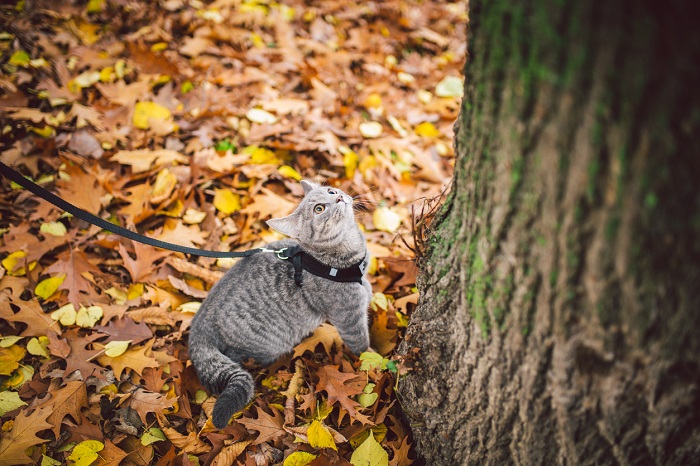
10 - Re-establish Vet Care
Once settled, find a local veterinarian and establish care. Having a vet nearby is important in case of any health concerns or emergencies.
Conclusion
Relocating with a cat requires careful planning and consideration to ensure a smooth transition. By taking steps to prepare your cat before the move, keeping them safe and secure during the move, and providing a calm and familiar environment in your new home, you can help your feline friend adjust with minimal stress. Patience, consistency, and lots of love are key to making the move as comfortable as possible for your cat. With the right approach, your cat will soon feel right at home in their new surroundings.
One way of pacing your move is to use storage to partially move your belongings during the home staging phase. Then when the house is sold you can move the items in storage without moving them back to your old home. This also means less disruption for your cat. The other advantage is that self storage is usually cheaper than the cost of storage that removal companies charge.
We can also provide a full range of packaging for moving and storage from our Box Shop located at each facility. This includes wrappings, bubble wrap, furniture covers, tapes, padlocks and of course boxes that your cat will enjoy.
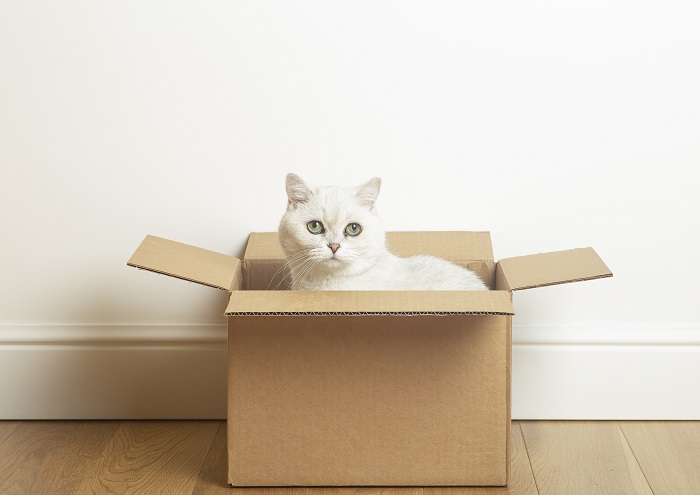
Things To Look For In Self Storage
- Enhanced Security Features: Choose units with advanced security measures like CCTV and controlled access.
- Insurance: Ensure your stored items are insured against theft and damage. We provide comprehensive storage insurance policies. The first month is free. Storage Insurance
- Ensure the facility has units of various sizes to accommodate your current and future storage needs. The ability to upgrade or downsize your unit is also important. We dont charge extra to right size your unit.
- There should be handly online tools to allow you to calculate or visualise you storage need. 3D-Space Visualiser

Our Locations
Ellerslie: https://kiwiselfstorage.co.nz/ellerslie-storage
Mount Roskill: https://kiwiselfstorage.co.nz/mt-roskill-storage
North Shore: https://kiwiselfstorage.co.nz/north-shore-storage
Newlands: https://kiwiselfstorage.co.nz/newlands-storage
For more information on how self storage can assist you and your cat with your move, contact us to arrange a visit to view out facilities or speak to one of our storage experts.
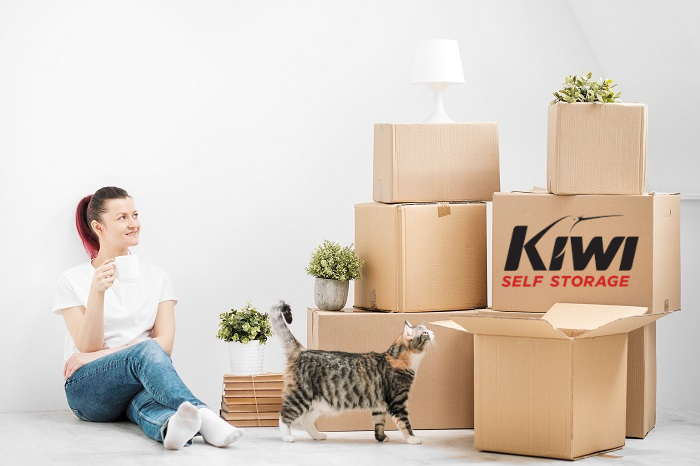
Additional Reading
Related Blogs

Keeping Storage Units Dry
Dampness and Humidity are one of the biggest threats to keeping items pristine in storage. Moisture can create environments that encourage mold growth and attract pests. Here are some techniques to keep your items safe.
Read More >>>

How to stage your home for a quick sale
Potential home buyers look at the quality and amenities in the area they are looking at buying. The quality of schools, job opportunities, location of retail and other services are all things that are taken into account. It is important that the condition and appearance of your home makes it easier for potential buyers to decide to buy your property and have confidence they are making the right decision.
Read More >>>
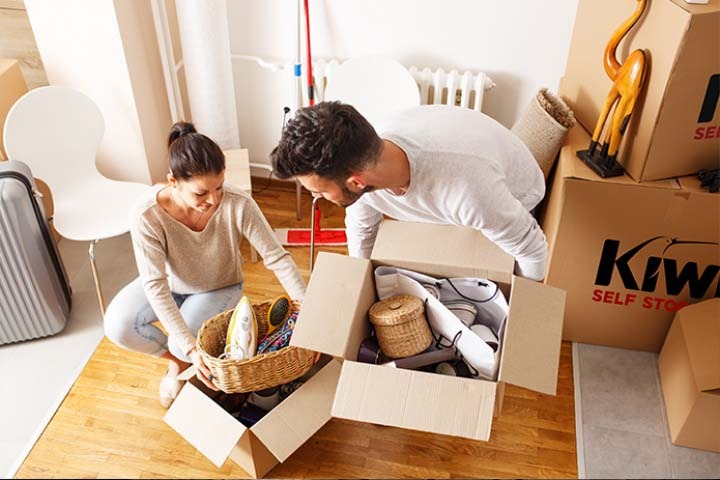
Box tips
Here are our tips for successful box packing and storing. You can buy boxes and other packaging material from all of our facilities.
Read More >>>





